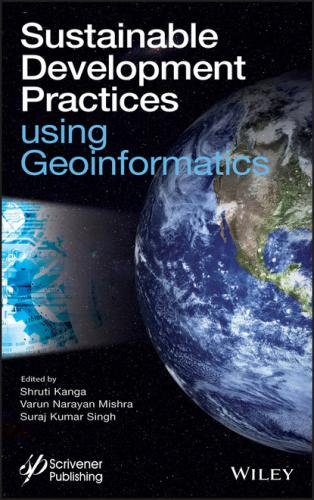Figure 2.1 Location map of the study area showing village boundaries along with water bodies and coal mining areas.
2.3 Methodology and Data Used
In the present study, a satellite image of Landsat TM (pertaining to year 2011) was used for the preparation of LU/LC map. The Landsat Thematic Mapper (TM) data was downloaded from the website of the United States Geological Survey (USGS) (http://glovis.usgs.gov). The topographical map pertaining to sheet number 73 E/6 provides the details of the study area and was obtained from the SOI on 1:50,000 scale for ground reference. Visual interpretation techniques were used for delineating and mapping of LU/LC classes of the study area. Categorization of various LU/LC classes such as built-up land (urban/rural), industrial settlement, cropland/fallow land, forest, wasteland, water body within coal mine, water body/river/reservoir, and coal mining area are envisaged based on classification scheme developed by National Remote Sensing Agency (NRSA) [24]. The minor modification in the categories at Level-II is done because of coal mining activity in the area. Further, the hazard rating (1 to 4) was assigned in each LU/LC class based on their relative influence toward inducing geo-environmental hazards.
Aerosol optical depth (AOD), also called aerosol optical thickness (AOT), PWV, and ambient temperature were simultaneously measured using MICROTOPS-II Sunphotometer instrument during January 2011. The Sunphotometer has five accurately aligned optical collimators, viz., 340, 500, 870, 936, and 1,020 nm with a full field view of 2.5° [25]. The finer wavelength, i.e., 340 nm was used to assess the status of atmospheric pollution in and around the coal mining area. The observation revealed considerable variation in AOT at the wavelength of 340 nm. The PWV is estimated from the measurements of solar intensity at 936 and 1020 nm. Ambient temperature was measured during day time to assess the vulnerability condition over industrial, mining, urban and forest area. The inverse distance weightage (IDW) technique was used to interpolate the AOT, PWV, and temperature concentration over the study area. This technique applies the spatial correlation of variables and based on observed values predicts the variables at unobserved locations [26].
For the preparation of the geo-environmental index model, each subclass of indicator maps assigns a numerical rating within a scale of 1–4 according to their relative influence of hazard proneness. Finally, a composite geo-environmental hazard map was prepared by the addition of the entire ratings assigned to different hazard inducing factor maps and divided by total number of parameters in GIS environment. For each of the above four geo-environmental hazard indicators, four classes of hazard such as low, moderate, high, and very high were defined. The composite geo-environmental hazard index (GHI) of the integrated layers is calculated by using the following formula:
Where AOT(340 nm)r represents ratings assigned to AOT; PWVr represents ratings assigned to PWV concentration in the winter season; Tr,represents the ratings assigned to temperature in the winter season; LULCr represents ratings assigned to LU/LC map; and n represents the number of indicators.
Census data of the year 2011 were used for computation of village-wise socio-economic indicators of PD, workers, literacy rate, and children below ages 0–6 years. Numerical ratings within a scale of 1 to 4 were assigned to each indicator class according to their assumed vulnerability to geo-environmental hazards. A composite vulnerability map was generated by integrating the village level thematic maps of all socio-economic indicators and divided by total numbers. For the socio-economic vulnerability map, four classes of vulnerability such as low, moderate, high, and very high were defined. The composite socio-economic vulnerability index (SVI) of the integrated layers is calculated by using the following formula:
where PDr represents the ratings assigned to population density; TWr represents ratings assigned to total worker density; CAGr represents ratings assigned to the population of children in the age group 0–6 years; LRr represents ratings assigned to percentage population of literacy rate; and n represents the number of indicators.
Risk is the probability of adverse consequences or expected losses resulting from interactions between hazards and vulnerable conditions [20, 27, 28]. The final coal mining risk index (CMRI) is prepared by multiplication of both GHI and SVI in the GIS domain using the following formula:
where CMRI represents coal mining risk index; GHI represents village level geo-environmental hazard index; and SVI represents the village level socio-economic vulnerability index.
All thematic layers were converted into a raster format, maintaining the same resolution (30 m) and coordinate system before they are taken into the GIS environment. The software, ArcGIS (version 10.5) and ERDAS Imagine (version 2015) were, respectively, used for GIS analysis and image processing in the digital framework. The details of the overall methodology adopted for the present study are depicted in Figure 2.2.
Figure 2.2 Flow chart of methodology adopted for coal mining risk mapping.
2.4 Result and Discussion
2.4.1 Thematic Layers of GHI
2.4.1.1 AOT, PWV, and Temperature
The ground-based concentration of AOT, PWV, and temperature were simultaneously measured at 41 locations using the MICROTOPS-II Sunphotometer instrument during January 2011. Further, measured datasets were spatially analyzed using GIS to identify the geo-environmental condition of the study area (Figures 2.3a–c).
An aerosol is one of the primary pollutants that affect air quality in urban as well as the rural environment of the world [29]. Various coal mining activities such as mine fire, overburden dumping, transportation, and other anthropogenic activity are responsible for increasing these types of pollutants in the atmosphere. The spatial distribution map of AOT(340 nm) indicates a higher concentration (>1.5) over industrial areas (Bhurkunda, Chaingada, Jindal Steel and Patratu thermal power station) followed by active mining regions (Potonga, Railgada, Sayal, Giddi-C, and Bhurkunda colliery). Higher frequency of transportation activities, loading/unloading of coal, smoke emissions from power plants, and sponge iron factories are the primary cause for dispersion of dust particles into the atmosphere in the area (Figure 2.3d). Whereas AOT is lower in the residential and vegetation areas (<0.6). The range of aerosol concentration in the study area is between 0.46 and 2.42 (Figure 2.3a).
